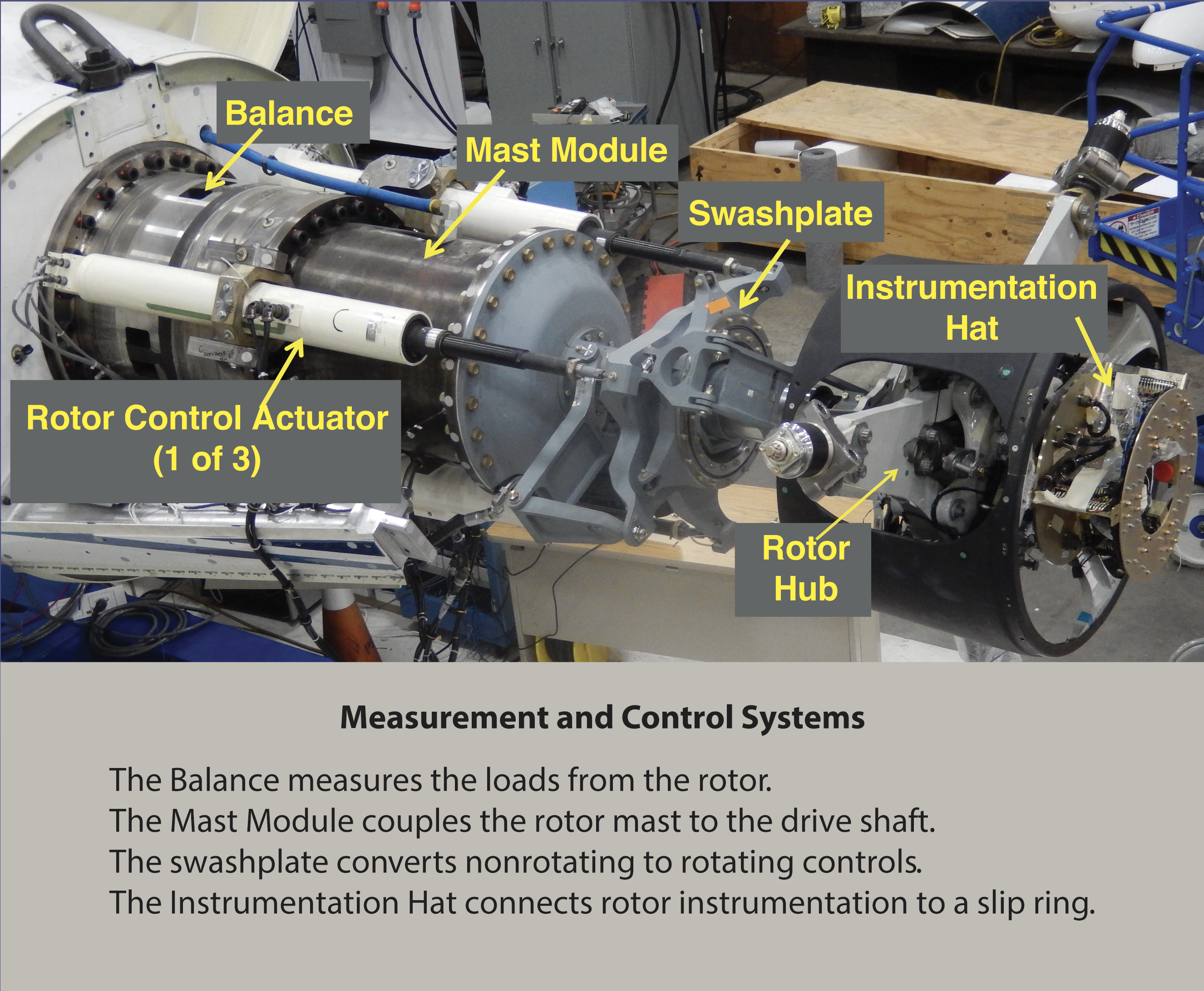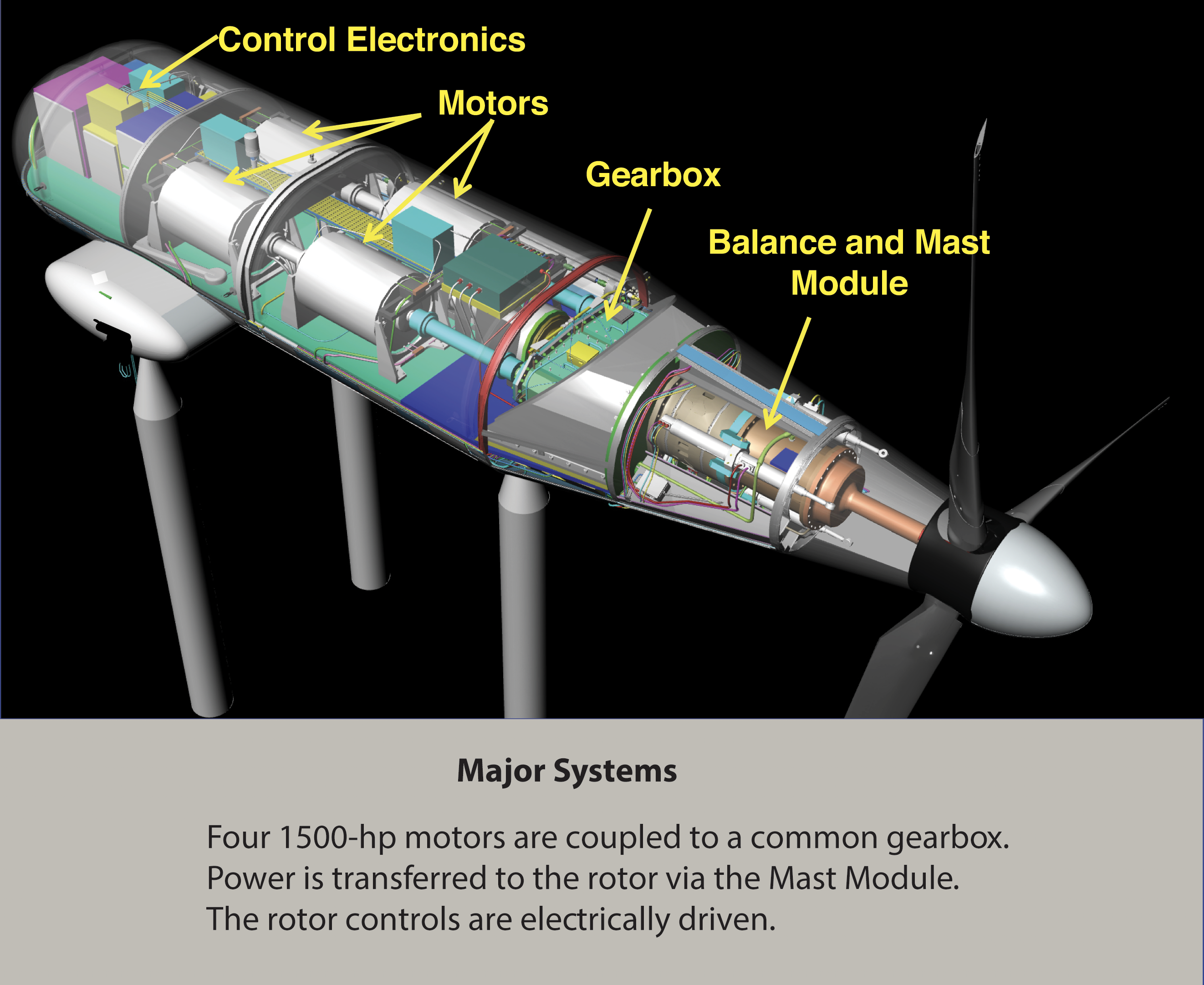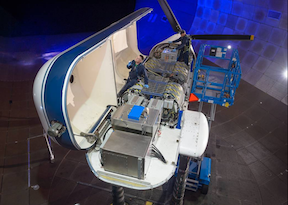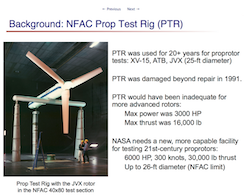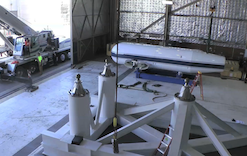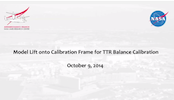Tiltrotor Test Rig
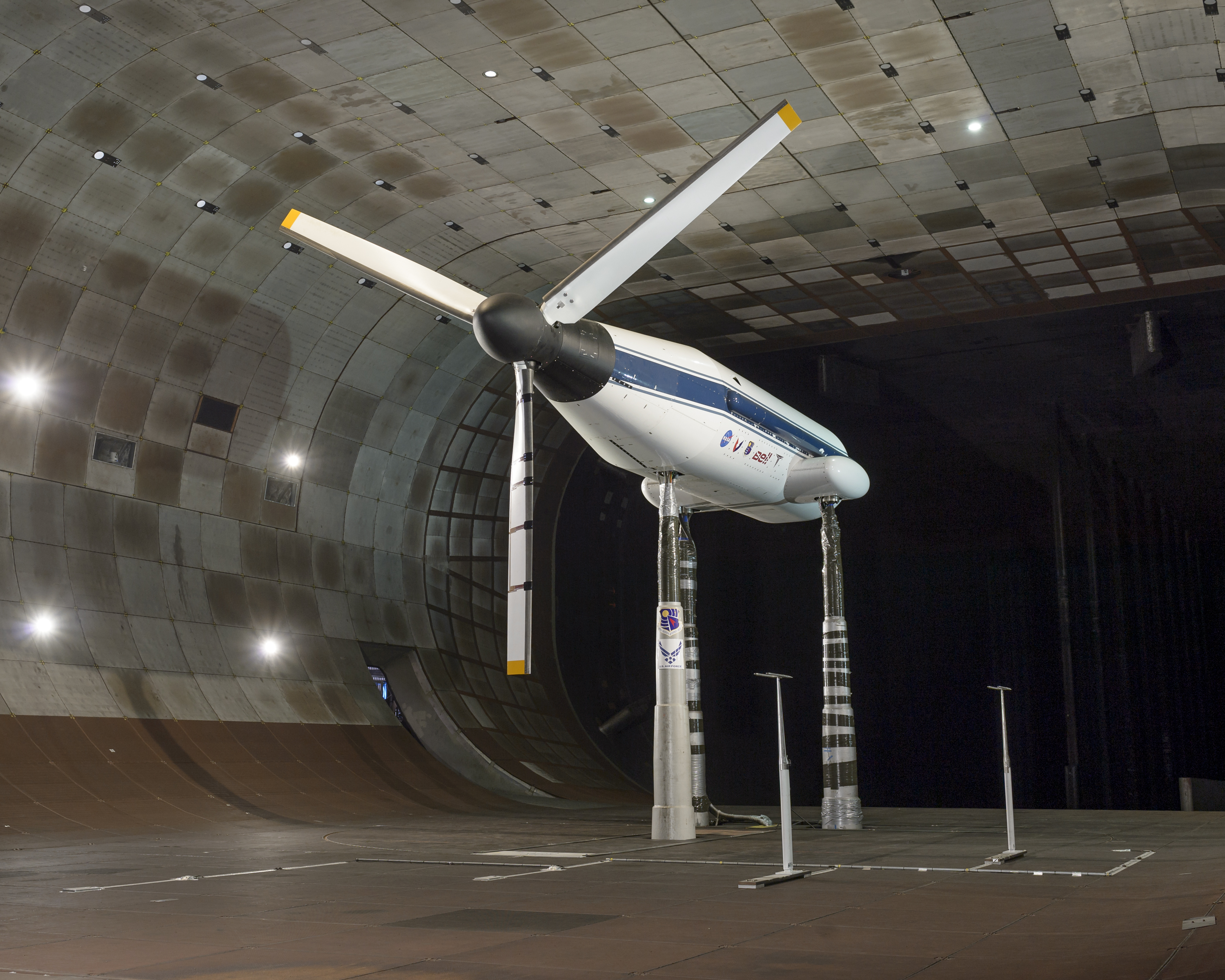
For a sense of scale, the rotor is 26 feet in diameter and the rotor hub is 20 feet above the test section turntable.
The Tiltrotor Test Rig (TTR) is a NASA project, joint with the Army and Air Force, to develop a new, large-scale proprotor test system for the National Full-Scale Aerodynamics Complex (NFAC). TTR is designed to test advanced proprotors up to 26 feet in diameter at speeds up to 300 knots. This combination of size and speed is unprecedented and is necessary for research into 21st-century tiltrotors and other advanced rotorcraft concepts. TTR provides critical data for validation of state-of-the-art design and analysis tools.
Bell Helicopter Textron and Triumph Aerospace Systems (now Bell and Calspan respectively) designed and manufactured the TTR and supporting equipment, including a calibration rig, under NASA contract. The U.S. Army and Air Force are contributing funding and support. Additional funding was provided under the American Recovery and Reinvestment Act.
The TTR is designed for use in both the 40- by 80- and 80- by 120-Foot Wind Tunnels. The TTR is a horizontal axis rig and rotates on the test-section turntable to face the rotor into the wind at high speed (300 knots), or fly edgewise at low speed (100 knots), or at any angle in between. The TTR has four electric motors capable of 5000 hp total.
The TTR can accommodate a variety of rotors. A 26-ft diameter research rotor (shown in the figure) is installed for the first test. For maximum accuracy, rotor forces are measured by a dedicated balance installed between the gearbox and the rotor. Rotor torque is measured by an instrumented drive shaft.
The TTR completed its first wind-tunnel entry in November 2018. Testing included over 1500 rotor data points at 60 combinations of tunnel airspeed, rotor tip speed, and yaw angle, reaching a maximum airspeed of 273 knots (the current NFAC facility limit). This is the highest airspeed ever acheived by a full-scale proprotor in any wind tunnel. Additional data included aerodynamic tares, motor tests, thermal tests, modal vibration tests, and other checkout activities.
Test Accomplishments
- Airplane mode performance data 264 knots
- Conversion mode data up to 120 knots
- Fully characterize hub/spinner drag
- Hover data for multiple NFAC configurations and rotor tip speeds
- Loads and accoustics data for all test conditions
Summary of TTR design capabilities:
- Wind speed - 300 knots axial, 180 knots edgewise (the exact limit is determined by dynamic pressure, hence atmospheric conditions)
- Rotational speed - from 126 to 630 rpm
- Rotor thrust - 20,000 lb steady; 30,000 lb peak
- In-plane force (resultant) - 5000 lb steady; 10,000 lb peak
- Moment (resultant) - 30,000 ft-b steady; 60,000 lb peak
- Shaft torque - 48,000 ft-lb steady; 72,000 lb peak
- Power - 6000 hp max (presently qualified for 2 hrs at 5000 HP)
- The force and moment limits given above are for the current rotor balance, referenced to the rotor hub. The structure is sized for larger hub moments and in-plane forces, given a different balance.
- Nominal rotor diameter is 26 ft; the actual limit depends on scale effects and test section (40- by 80-ft or 80- by 120-ft).
Current Configuration
Initial wind-tunnel tests use a Bell 699 rotor unique to NASA with extra instramentation and modified controls.
Related Publications:
Acree, C.W., Sheikman, A., Norman, T., "High-Speed Wind Tunnel Tests of a Full-Scale Proprotor on the Tiltrotor Test Rig" Presented at the Vertical Flight Society's 75th Annual Forum & Technology Display, Philadelphia, PA, USA, May 13-16, 2019, DownloadAcree, C.W., "Tiltrotor Test Rig Breaks New Ground" Vertiflight Magazine July/August 2019, Download
Acree, C.W., "Vertical Climb Testing of a Full-Scale Proprotor on the Tiltrotor Test Rig," Presented at the VFS Aeromechanics for Advanced Vertical Flight Technical Meeting, San Jose, CA, January 21–23, 2020. Download
